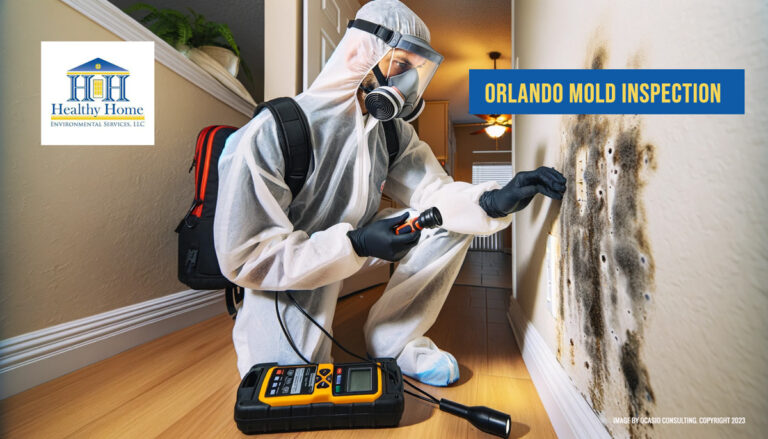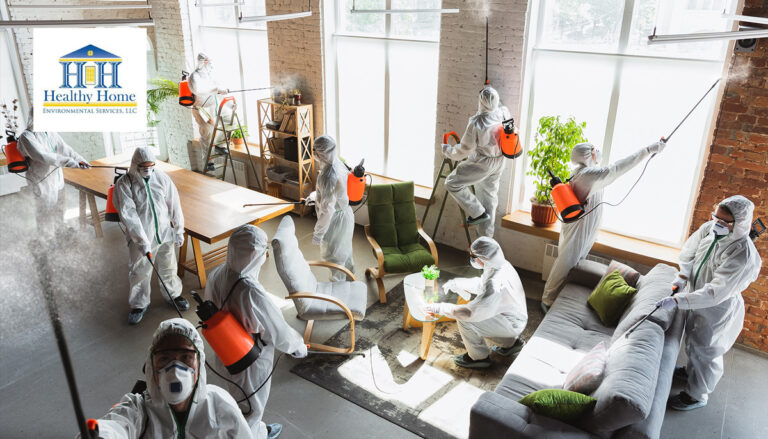Adenosine Triphosphate (ATP) Testing in Hygiene Monitoring: A Practical Guide to Bioluminescence Analysis
Welcome to our practical guide on ATP testing in hygiene monitoring. In industries where cleanliness is paramount, such as food production, healthcare, and environmental cleaning, maintaining high hygiene standards is crucial to ensuring safety and preventing contamination.
But how can we effectively measure cleanliness on surfaces? How can we determine the presence of organic matter and potential pathogens? This is where ATP testing comes into play.
ATP testing, or adenosine triphosphate testing, is a rapid and reliable method for assessing cleanliness levels by measuring the presence of ATP – an energy molecule found in all living cells. By detecting the amount of ATP on surfaces, ATP testing provides valuable insights into the cleanliness and potential contamination of various environments.
In this comprehensive guide, we will delve into the significance of ATP testing in hygiene monitoring, explore prominent ATP test systems like the Hygiena Systemsure Plus, and provide insights into the steps to lower ATP levels for improved hygiene. So, let’s embark on this journey together and unlock the secrets of ATP testing and its role in maintaining cleanliness!
Key Takeaways:
- ATP testing by Healthy Home Environmental Services is a valuable tool for assessing cleanliness and potential contamination on surfaces.
- Bioluminescence analysis, based on the detection of ATP, provides a rapid and reliable method for ATP testing.
- The Hygiena Systemsure Plus is one of the prominent ATP test systems available in the market.
- Lowering ATP levels through effective cleaning practices and proper use of disinfectants can improve hygiene standards.
- ATP testing is applicable in various industries, including food production, healthcare, and environmental cleaning.
Introduction

Welcome to our comprehensive guide on ATP testing in hygiene monitoring. In this section, we will provide an overview of ATP testing and highlight its importance in maintaining cleanliness, preventing contamination, and ensuring safety across various industries.
ATP testing is a powerful tool that allows us to assess the presence of organic matter and potential contaminants on surfaces. By understanding the key concepts and applications of ATP testing, we can effectively monitor hygiene levels and implement appropriate measures to improve cleanliness.
What is ATP Testing and Its Importance in Hygiene?

In hygiene monitoring, ATP testing plays a critical role in ensuring cleanliness and preventing contamination in various industries such as food production, healthcare, and environmental cleaning.
By measuring the levels of Adenosine Triphosphate (ATP), ATP testing offers valuable insights into the presence of organic matter and potential contamination on surfaces.
Understanding ATP and Its Role in Cleanliness
Adenosine Triphosphate (ATP) is a molecule found in all living cells and serves as a crucial source of energy. In the context of cleanliness, ATP acts as an indicator of overall hygiene levels. When surfaces are clean and free from organic residues, ATP levels tend to be low. However, if surfaces are contaminated or inadequately cleaned, ATP levels rise, indicating the presence of potentially harmful substances.
What is an ATP Test and How Does it Work?
An ATP test is a method of measuring ATP levels on surfaces using a bioluminescence-based analysis. During the test, a sample is collected from the surface using an ATP testing device such as an ATP swab.
The sample is then combined with a reagent that reacts with ATP, producing light in proportion to the amount of ATP present. This light is measured and quantified by a luminometer, providing a numerical value known as Relative Light Units (RLU) that corresponds to the ATP levels on the surface.
Significance of ATP Testing in Hygiene Monitoring
The importance of ATP testing in hygiene monitoring cannot be overstated. It allows for real-time assessment of cleanliness levels, enabling swift action to be taken in case of contamination.
ATP testing provides objective data that supports decision-making processes, helping ensure that proper cleaning protocols and practices are in place. By monitoring ATP levels, organizations can identify areas at risk of contamination, implement targeted cleaning strategies, and maintain high hygiene standards.
Role of ATP in Pathogen Detection and Prevention
ATP testing plays a crucial role in pathogen detection and prevention. As ATP is present in all living cells, including bacteria and other microorganisms, its detection indicates the potential presence of pathogens on surfaces.
By regularly testing ATP levels, organizations can proactively identify areas with high ATP readings, indicating a higher probability of pathogenic contamination. This allows for prompt remediation, preventing the spread of harmful microorganisms and reducing the risk of infections.
The Relationship Between ATP and the Presence of Contamination
There is a direct relationship between ATP levels and the presence of contamination. Higher ATP readings indicate the presence of organic residues, including food particles, bodily fluids, or other microorganisms.
By monitoring ATP levels, organizations can identify areas that require attention and implement appropriate cleaning and sanitation measures. Regular ATP testing ensures that contamination is promptly detected and addressed, contributing to safer and cleaner environments.
The image above visually represents the importance of ATP testing in maintaining cleanliness and preventing contamination.
Prominent ATP Test Systems: Exploring Hygiena Systemsure Plus

Overview of Hygiena Systemsure Plus for ATP Testing
The Hygiena Systemsure Plus is a leading ATP test system used for assessing and monitoring cleanliness in various industries. This innovative system provides accurate and reliable results, allowing for effective hygiene management.
The Hygiena Systemsure Plus ATP test system consists of a handheld luminometer, ATP swab tests, and software for data analysis. It is designed to detect and measure ATP levels on surfaces, providing valuable insights into the cleanliness and potential presence of organic matter and contaminants.
Luminometer: The Heart of Hygiena’s ATP System
The luminometer is the core component of the Hygiena Systemsure Plus ATP test system. It is responsible for measuring the bioluminescent signals produced when ATP reacts with enzymes. The luminometer detects and quantifies the light emitted from the reaction, providing objective ATP results within seconds.
Procedure for Using Hygiena’s ATP Swab Test
The Hygiena Systemsure Plus ATP swab test is simple to use and requires minimal training. The procedure involves:
- Sampling: Collect a swab sample from the surface of interest by swabbing in a standardized manner.
- Activation: Activate the swab by squeezing it to release the buffer solution, ensuring optimal ATP recovery.
- Insertion: Insert the activated swab into the luminometer’s sample chamber.
- Measurement: Press the measurement button on the luminometer to initiate the ATP detection process.
- Results: The luminometer displays ATP results as Relative Light Units (RLU), indicating the cleanliness level of the tested surface.
Reading and Interpreting ATP Scores on Hygiena Systemsure Plus
Interpreting ATP scores obtained from the Hygiena Systemsure Plus system is crucial for accurate cleanliness assessments. The following guidelines can help in understanding and analyzing the results:
- Low ATP Scores: Low RLU values indicate minimal ATP presence and suggest a clean surface.
- High ATP Scores: High RLU values indicate higher ATP levels, indicating potential contamination or inadequate cleaning.
- Baseline ATP Scores: Establishing baseline ATP scores for specific areas or surfaces helps monitor cleanliness trends and identify deviations.
- Comparative Analysis: Comparing ATP scores between different surfaces or facilities enables benchmarking and identifying areas that may require additional attention.
Limitations of Hygiena’s ATP System
While the Hygiena Systemsure Plus ATP test system is highly effective and widely used, it is essential to understand its limitations:
- Limited Detection: The system detects ATP, which is a marker for organic matter and potential contaminants. However, it may not identify specific microorganisms or substances present on the tested surfaces.
- Variability: ATP levels can be influenced by various factors, such as temperature, pH, and environmental conditions. Therefore, interpreting results requires considering these variables.
- Surface Interference: Certain substances or residues on surfaces may interfere with ATP readings, leading to inaccurate results. Regular cleaning and proper sampling techniques can mitigate this limitation.
Steps to Lower ATP Levels for Improved Hygiene

In order to maintain optimal cleanliness and hygiene, it is essential to lower ATP levels on surfaces. By following effective cleaning practices and implementing the right strategies, you can significantly reduce ATP and create a safer environment. Here are some steps to consider:
Understanding Relative Light Units (RLU) and Ideal ATP Levels
Relative Light Units (RLU) are used to measure ATP levels, with higher RLU indicating higher ATP presence. It is important to understand the ideal ATP levels for different industries and surfaces, as this provides a benchmark for cleanliness and hygiene goals.
Effective Cleaning Practices to Reduce ATP on Surface
To lower ATP levels, it is crucial to implement effective cleaning practices. This includes:
- Using suitable cleaning agents and equipment specifically designed for ATP reduction.
- Focusing on areas prone to high contamination, such as food preparation surfaces or high-touch areas.
- Following proper cleaning techniques, including scrubbing, rinsing, and drying surfaces thoroughly.
- Regularly cleaning and sanitizing equipment and tools to prevent cross-contamination.
Role of Disinfectants in Lowering ATP Levels
Disinfectants play a vital role in lowering ATP levels by eliminating potential contaminants and microorganisms. When selecting a disinfectant, ensure that it is effective against a wide range of pathogens and suitable for the specific surface or equipment being cleaned. Follow the manufacturer’s instructions for proper application and contact time to achieve optimal ATP reduction.
Involvement of Visual Inspection in the Cleaning Process
Visual inspection is an essential step in the cleaning process as it allows you to identify areas that need further attention. By visually inspecting surfaces for residue, dirt, or stains, you can ensure thorough cleanliness and verify the effectiveness of your cleaning practices. Regular visual inspections should be conducted to maintain consistent hygiene standards.
Importance of Allergen Removal in Decreasing ATP
In industries such as food production or healthcare where allergen control is critical, removing allergens is key to decreasing ATP levels. Implementing measures like proper equipment cleaning, segregation of allergen-containing ingredients, and establishing dedicated allergen-free zones can significantly reduce ATP and create a safer environment for individuals with allergies.
By following these steps and incorporating effective cleaning practices, you can lower ATP levels and achieve improved hygiene in various industries. Lower ATP levels indicate reduced contamination and a safer environment for all.
Reliability of ATP Testing in Different Areas

In this section, we will explore the reliability and efficacy of ATP testing in various industries and settings. ATP testing plays a crucial role in maintaining cleanliness, preventing contamination, and ensuring safety. Let’s delve into the specific areas where ATP testing proves its effectiveness.
ATP Testing in Food Industry: Ensuring Food Safety
The food industry adheres to strict cleanliness standards to ensure the safety and quality of food products. ATP testing is widely employed to monitor hygiene levels in food production facilities. By detecting ATP, the presence of organic matter and potential contamination can be assessed, enabling prompt corrective actions to maintain food safety.
ATP Testing in Hospital Cleaning and Infection Control
In healthcare settings, proper cleaning and infection control are paramount to prevent the spread of pathogens. ATP testing plays a vital role in hospital cleaning protocols, enabling healthcare facilities to monitor and evaluate the efficacy of their cleaning practices. By measuring ATP levels, healthcare providers can ensure thorough cleaning, minimize the risk of healthcare-associated infections, and safeguard patient safety.
Environmental Cleaning: ATP Testing for Cleaner Surfaces
ATP testing is not limited to the food industry and healthcare settings. It also finds extensive use in environmental cleaning, where maintaining cleanliness and hygiene is essential. ATP testing helps assess the effectiveness of cleaning procedures in various environments, such as offices, schools, public spaces, and transportation. By monitoring ATP levels, environmental cleaning can be optimized to ensure cleaner surfaces and reduce the potential for contamination.
ATP Test’s Efficacy in Detecting Organic Matter and Food Residue
ATP testing demonstrates efficacy in detecting organic matter and food residue on surfaces. This is particularly important in industries where strict hygiene standards must be met, such as food production and processing facilities. By accurately measuring ATP levels, ATP tests provide quantitative data on the presence of organic matter and can identify areas that require additional cleaning and sanitation efforts.
Why ATP Tests are Unable to Detect Certain Microorganisms
While ATP tests are reliable in detecting organic matter and food residue, they have limitations in detecting certain types of microorganisms. ATP tests primarily measure the presence of ATP, which is found in all living cells, including bacteria, but they cannot differentiate between pathogenic and non-pathogenic microorganisms. It is crucial to complement ATP testing with additional microbial testing methods to obtain a comprehensive assessment of microbial contamination.
Exploring ATP Bioluminescence in Assessing Cleanliness

Bioluminescence is a remarkable natural phenomenon that plays a crucial role in assessing cleanliness through the detection of ATP (adenosine triphosphate) levels. ATP, the molecule found in all living cells, is responsible for carrying and transferring energy within the cell.
In the presence of certain enzymes, ATP reacts and generates light, a process known as ATP bioluminescence. This reaction forms the basis of bioluminescence analysis, a reliable and rapid method for testing the cleanliness of surfaces.
Bioluminescence analysis involves the use of ATP testing systems, such as luminometers, to measure the light emitted during the ATP bioluminescent reaction. The intensity of the light is quantified in Relative Light Units (RLU), which correlate with the ATP levels present on the surface being tested.
By correlating RLU values with ATP levels, bioluminescence analysis provides valuable insights into the cleanliness of surfaces. Higher RLU readings indicate elevated ATP levels, suggesting the presence of organic matter and potential contamination.
Demystifying ATP readings from a bioluminescent perspective is essential for accurate interpretation. It is important to understand that higher RLU readings are not necessarily indicative of harmful pathogens or microorganisms. Rather, they signify the presence of ATP, which can originate from various sources, including human skin, food residues, or environmental contaminants.
To fully comprehend ATP readings and establish appropriate cleanliness standards, it is crucial to consider the specific industry and surface being tested. ATP bioluminescent readings should be contextualized with industry-specific guidelines and benchmarks to determine acceptable ATP levels for different surfaces.
ATP bioluminescence analysis offers a valuable perspective on cleanliness assessment, providing a rapid and reliable method for detecting ATP levels. By understanding the relationship between ATP and bioluminescence, industries can effectively monitor and maintain cleanliness standards to ensure a safe and healthy environment.
ATP Bioluminescence and the Molecule Found in All Living Cells
The connection between ATP bioluminescence and the ATP molecule found in all living cells underlines the significance of ATP as an indicator of cleanliness. As a universal energy carrier, ATP is present in all organisms, including bacteria, yeast, plants, and animals.
ATP bioluminescence analysis leverages the inherent characteristics of ATP and its bioluminescent reaction to assess cleanliness. The ability to detect ATP, a molecule ubiquitously present in living cells, allows for the accurate determination of surface cleanliness across various industries and settings.
The utilization of ATP bioluminescence analysis in hygiene monitoring underscores the importance of ATP testing in maintaining cleanliness, preventing contamination, and ensuring the safety of environments where hygiene is vital.
Conclusion
In conclusion, ATP testing is a vital tool in maintaining cleanliness, preventing contamination, and ensuring safety in various industries. The measurement of ATP levels provides valuable insights into the presence of organic matter and potential contamination on surfaces, allowing for proactive measures to be taken. Throughout this article, we have explored the significance of ATP testing and its role in hygiene monitoring.
By utilizing ATP testing kits and devices like the Hygiena Systemsure Plus, professionals can rely on bioluminescence analysis to rapidly and reliably assess cleanliness. With a better understanding of ATP and its role in cleanliness, it becomes evident why ATP testing is an essential practice. Keeping ATP levels in check not only aids in pathogen detection and prevention but also ensures the removal of contaminants from surfaces.
Lowering ATP levels for improved hygiene can be achieved through effective cleaning practices, utilizing disinfectants, conducting visual inspections, and focusing on allergen removal. These steps together contribute to increased hygiene levels and safer environments. By embracing the reliability of ATP testing, industries such as food production, healthcare, and environmental cleaning can enhance their hygiene practices and maintain a higher standard of cleanliness.
In conclusion, ATP testing, with its bioluminescence analysis and correlation with cleanliness, plays a significant role in assessing and maintaining hygiene. By recognizing the importance of ATP testing and implementing its principles, we can create cleaner and safer spaces for everyone.
Contact Healthy Home Environmental Services, the leading ATP testing company in Central Florida today!









